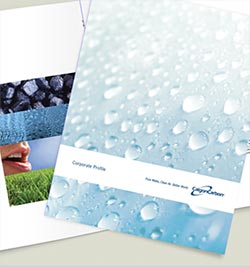Nuestro sitio web utiliza cookies, incluidas las cookies de perfiles de terceros, para mejorar su experiencia de usuario. Puede obtener más información sobre cómo utilizamos las cookies y cómo cambiar su configuración de cookies en nuestra Política de privacidad. Al cerrar este mensaje, hacer clic arriba o continuar utilizando este sitio, usted da su consentimiento para que utilicemos cookies.
Calgon Carbon Corporation offers an array of purification solutions for municipal drinking water– all delivered through a comprehensive global service network.
These can be used independently or in combination to meet your needs and/or regulatory standards in the most economical way possible.
Surface Water
The U.S. Environmental Protection Agency (EPA) and most state-based departments of health consider adsorption by granular activated carbon (GAC) to be the best available technology for the removal of many organic materials in surface water. On its own, or paired with a UV disinfection system, GAC can facilitate the removal of:
- Disinfection byproducts (DBPs) associated with chlorine and alternative disinfectants
- Algal toxins, such as microcystin-LR and anatoxin-A
- Bacteria, viruses and parasites such as cryptosporidium and giardia
- Endocrine-disrupting compounds (EDC)
- Pharmaceuticals and personal care products (PPCP)
- Taste and odor-causing compounds (T&O)
- Organic materials from decaying plants and other naturally occurring matter (NOM) which serve as the precursors for DBPs
Groundwater
Groundwater is drawn from underground aquifers and can require treatment to remove industrial chemicals, natural minerals, viruses and bacteria. To address these water purification challenges, Calgon Carbon can design groundwater treatment systems that incorporate GAC and UV disinfection, and the elimination of organic contaminants. Additionally, ion exchange technology can assist with the removal of inorganic compounds.
Technologies/Solutions for the Treatment of Municipal Drinking Water:
Whether your drinking water is sourced from groundwater, surface water or a combination of both, Calgon Carbon offers three purification technologies:
Granular Activated Carbon (GAC)
Granular activated carbon (GAC) is a very reliable solution for a variety of water treatment challenges, and more water providers are adopting it every year. Use of GAC provides water utilities with an efficient and cost-effective means to prevent the formation of disinfection byproducts (DBPs) while also removing other organic contaminants found in both surface water and groundwater.
Más información >>UV Water Treatment Technologies
Treating water with UV irradiation is highly effective because it attacks harmful organisms at the genetic level. By channeling contaminated water over ultraviolet lamps with germicidal properties, the UV energy disrupts the DNA in viruses, bacteria, and protozoa, making them unable to reproduce and rendering them harmless. UV is especially helpful to treat chlorine-resistant organisms like Cryptosporidium and Giardia. UV systems coupled with advanced oxidation can also effectively treat taste and odor compounds present in drinking water.
Ion Exchange Technology
Ion exchange technology is a cost effective process to treat municipal water contaminated by inorganic compounds. These compounds include but are not limited to:
- Nitrate
- Perchlorate
- Hexavalent Chromium (Cr VI)
- Color

